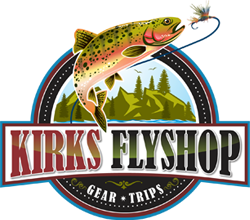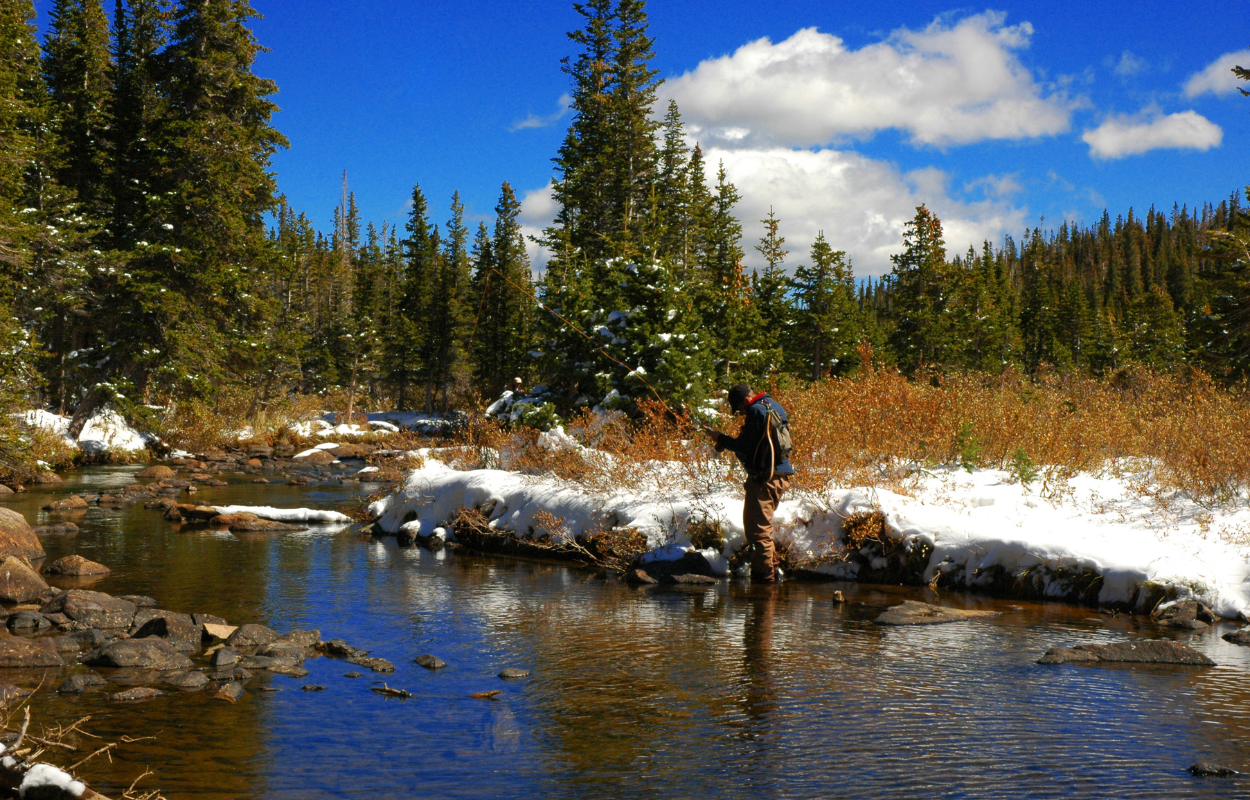Spring Fly Fishing in Estes Park: Unlocking the Secrets of the Big Thompson River
Spring fly fishing in Estes Park heralds the awakening of our river systems after the winter chill. As the ice melts and the trout sense the warming waters, anglers are presented with a prime opportunity before the rush of spring runoff. While fly fishing in Rocky Mountain National Park is possible, we spend most of our time on the lower Big Thompson River below Lake Estes due to the lingering cold water of winter. So, this blog is mostly about fishing the Big Thompson River in the spring time. Here are valuable insights and tips for successful spring fly fishing in Estes Park, Colorado.
1. Keep It Small
March and April bring low water levels in the Big Thompson, making it ideal to fish with nymphs in the #18 or #20 size range. The sparkle wing RS2 remains a favorite, serving as a year-round snack for the discerning browns and rainbows in the Big Thompson Canyon. Contrary to popular belief, using smaller nymphs as the lead fly is effective in clear water conditions, especially when the river hovers around 100-150 cfs. Consider a setup with a size #18 zebra midge followed by a size #20 RS2 pattern for a successful spring fly fishing outing in Estes Park.
Additionally, when targeting trout in low and clear water, we recommend using the lightest fluorocarbon tippet possible for the size of fish we’re targeting. Sometimes that means going as low as 6X or even 7X tippet in particularly “spooky” conditions where trout are very aware of your line and you need a light touch to convince them to eat your flies. Lengthen your leaders and taper down to small tippet to be most effective.
2. Smaller Strike Indicators
Given the relatively shallow nature of the Big Thompson River during low flows, where fish often occupy 1-2 feet of water, opt for smaller strike indicators. Heavy indicators can spook fish when they hit the surface, which is less than ideal for anglers who like to catch fish. While dry flies might not attract rises, incorporating one in a dry-dropper setup helps land the flies softly and detect strikes. Alternatively, consider using a New Zealand strike indicator, available at our Estes Park fly shop, for a subtler presentation.
Other strike indicators we like include Airlock Strike Indicators, Oros Strike Indicators, and Thingamabobbers.
3. Explore Beyond The Tailwater
As winter transitions to spring fly fishing in Estes Park, more sections of the Big Thompson Canyon become accessible beyond the tailwater below Lake Estes Dam. Venture beyond the confines of the tailwater and explore stretches from the golf course down to the Dam Store at the bottom of Highway 34. The expanding open water provides opportunities to catch sizable fish along different points of the Big Thompson Canyon.
As the ice melts out on Lake Estes, pay close attention to the areas where the ice has receded, as those areas will be hot spots for finding happy trout looking for some of the first real eating opportunities of spring fly fishing in Estes Park.
4. Contact Us For A Guided Fly Fishing Trip in Estes Park
When you’re ready to elevate your spring fly fishing trip in Estes Park experience, consider booking a guided Estes Park fly fishing trip with us. Our seasoned Colorado fly fishing guides have an intimate knowledge of the Big Thompson River, ensuring you not only enjoy the beauty of spring in Estes Park but also have a memorable and successful trout-catching adventure. Contact us to plan your guided spring fly fishing trip, or stop by the Estes Park Fly Shop to learn more about the river. Lastly, don’t forget to check the Estes Park fishing report to stay up to date on conditions.


